Table of contents
- WILL I BE INDEPENDENT WHEN I RETURN BACK TO HOME?
- WHEN WOULD I BE ABLE TO RETURN TO WORK?
- DO I NEED TO CONTINUE MY REHABILITATION AFTER DISCHARGE?
- HOW DO I COPE WITH MY KNEE PAIN AND SWELLING?
- WHICH EXERCISE SHOULD I PRACTICE AFTER DISCHARGE?
- WHICH EXERCISE SHOULD I AVOID?
- WHAT CAN I DO TO HELP MY RECOVERY?
- SHOULD I WEAR A KNEE BRACE AFTER SURGERY?
- HOW ABOUT MY FOLLOW-UP APPOINTMENTS?
- WHEN WOULD I BE ABLE TO RETURN BACK TO SPORT?
You are going to be discharged after your meniscectomy procedure, this information may help you to participate effectively to your rehabilitation programme.
WILL I BE INDEPENDENT WHEN I RETURN BACK TO HOME?
On the day of surgery, you would be authorised by your surgeon to stand and walk with full weight bearing as tolerated by your operated leg. To prevent gait deviation and pain, your physiotherapist may recommend you to use crutches until you have recovered your normal gait pattern. It can take only few days if the surgeon removes only a small part of your meniscus but in case of meniscectomy on degenerative knee it may take up to 2 weeks.
Be aware that to be able to return back home, you should plan for someone to help you as you will not be able to drive your car or motorbike. Do not drive until otherwise recommended by your physiotherapist or surgeon; this may take 1 to 3 weeks after the surgery.
WHEN WOULD I BE ABLE TO RETURN TO WORK?
Light duty or desk work may be resumed 3 to 7 days after surgery, depending on your comfort. To be able to run your rehabilitation programme, you should consider starting back with “light” days. Any other work-related activities should be discussed with your surgeon.
DO I NEED TO CONTINUE MY REHABILITATION AFTER DISCHARGE?
Performing early and well-adjusted rehabilitation programme is one of the keys of success for your meniscectomy surgery. Following discharge, you may continue your rehabilitation programme upon physiotherapist supervision to optimise your recovery and limit residual pain. Based on your functional baseline, rehabilitation can take from 3 weeks to 3 months:
- Phase 1: up from 3 days to 2 weeks the programme focuses on the healing process, controlling pain and swelling, activating leg muscles and recovering your normal gait mechanics;
- Phase 2: up from 3 to 6 weeks, you continue to protect the healing, start to improve flexibility and close kinetic chains strengthening, maintain proper gait pattern. Continue cycling 15 to 30 minutes per day but no sport;
- Phase 3: up from 6 to 12 weeks, improve flexibility, strengthening, balance and proprioception. As per your physiotherapist clearance, begin jogging and running progression, plyometrics (skips and bounds) and agility drills, shuffling or cutting with different speed.
HOW DO I COPE WITH MY KNEE PAIN AND SWELLING?
Just after surgery, your physiotherapist will initiate a pain and swelling control programme. At discharge, continue this programme alternating rest leg elevated, apply cold packs for 15-20 minutes every 2 hours, walk with crutches as recommended and perform pain free exercises programme. Avoid long sitting or long standing positions as it may increase the swelling.
WHICH EXERCISE SHOULD I PRACTICE AFTER DISCHARGE?
At discharge, this is important to practice exercises around 10 minutes every 2 hours during daytime. This programme includes:
1. Straight Leg Raise: raise your leg straight off from your bed. Hold 6 seconds then relax back on the bed 6 seconds. Do 10 repetitions.
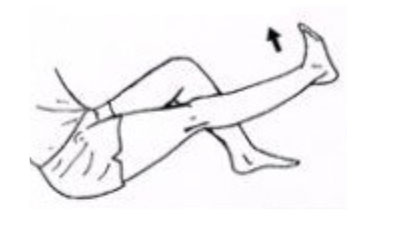
2. Ankle pump and ankle circles: to maintain calf circulation and prevent blood clots, with the leg elevated, move 10 times the foot up and down then do 10 circles in each way with your ankle.
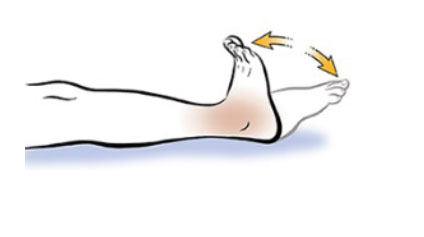
3. Heel slide: gradually bend you knee up to 90 degrees hold 10 seconds then straighten your knee out and relax 10 seconds again. Do 10 repetitions.
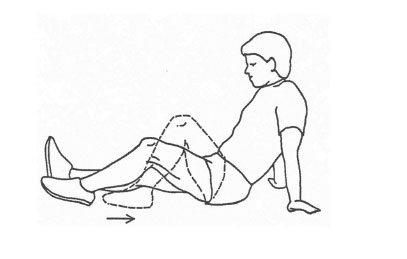
4. Hip-knee flexion at the bed edge: alternate legs. Do 10 repetitions.
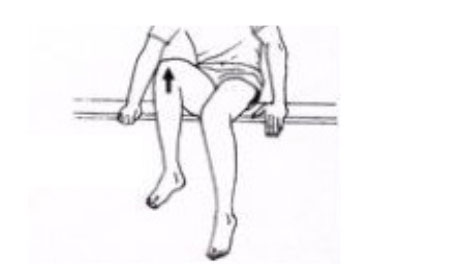
Repeat each above exercise (1. 2. 3. 4.) for a total of 3 sets.
At your next physiotherapy session, this home rehabilitation programme will be adjusted.
WHICH EXERCISE SHOULD I AVOID?
During the early stage of rehabilitation for the first few weeks, you are authorised to move your knee pain free. To support the healing process, do not force bending or extension of your knee. Practice pain free activities as your physiotherapist recommendations.
During the first month or until otherwise recommended by your physiotherapist, you should avoid seated knee extension in Open Kinetic Chain without or with resistance: that’s mean extending your knee with the extremity of your leg not fixed.
WHAT CAN I DO TO HELP MY RECOVERY?
Your recovery will progress quickly upon your physiotherapist guidance. Do not hesitate to share your expectations or worries so that you receive the most appropriate programme:
- Do not over exercise;
Control your leg swelling by cold application and good positioning;
Maintain cardio pulmonary programme as recommended by your physiotherapist.
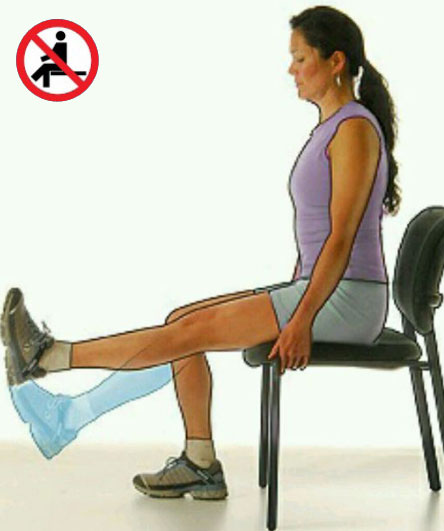
SHOULD I WEAR A KNEE BRACE AFTER SURGERY?
After meniscectomy surgery pain and swelling would be controlled by your physiotherapy programme. Do not wear a knee brace except if recommended by your surgeon.
HOW ABOUT MY FOLLOW-UP APPOINTMENTS?
At discharge, your surgeon may provide you a medical referral to continue your rehabilitation as an outpatient. You should start your outpatient programme within the first week after surgery, 5 to 10 sessions would be recommended.
WHEN WOULD I BE ABLE TO RETURN BACK TO SPORT?
During your rehabilitation programme, your physiotherapist will gradually increase the physical activities level including stretching, strengthening and cardio training. These low impact activities include walking, cycling, swimming free style (when scars are dry), agility drills, plyometric exercises (skips and bounds) and jogging. Based on the surgeon recommendation and your residual pain you will probably expect to return to low impact sport activities within 3 months after your surgery.
If you have any concerns related to your rehabilitation programme, do not hesitate to contact our physiotherapy team for further advice.




